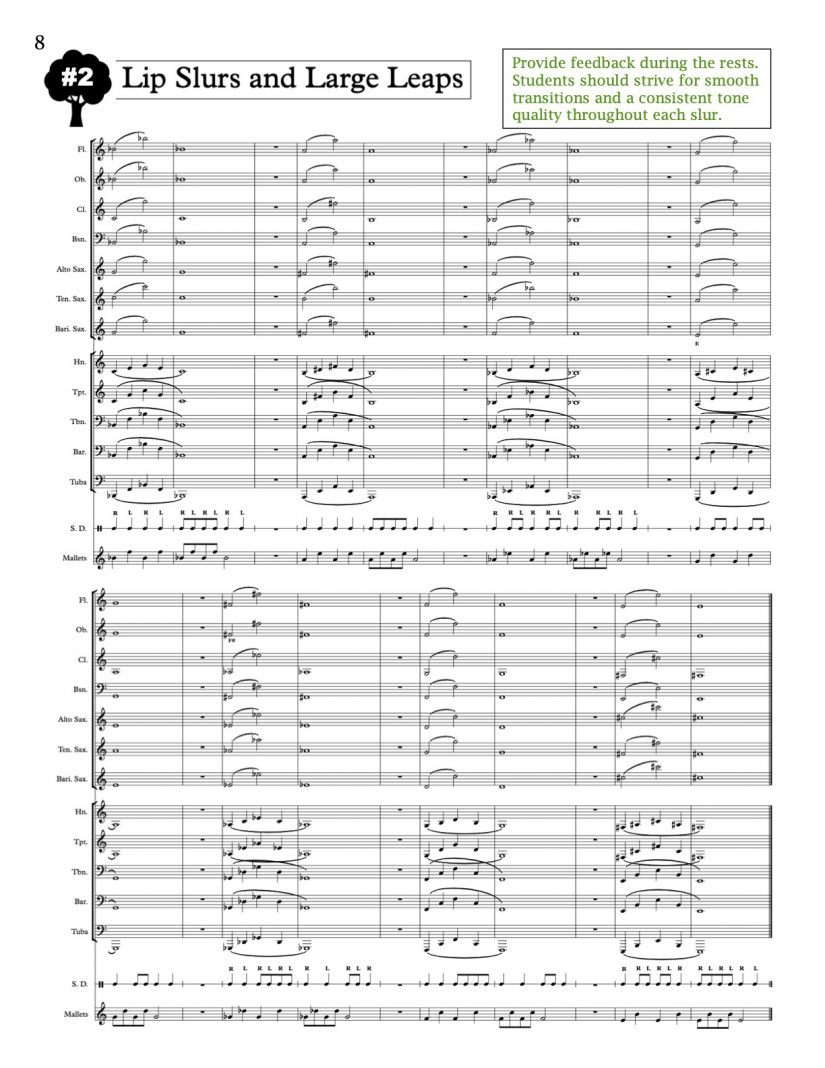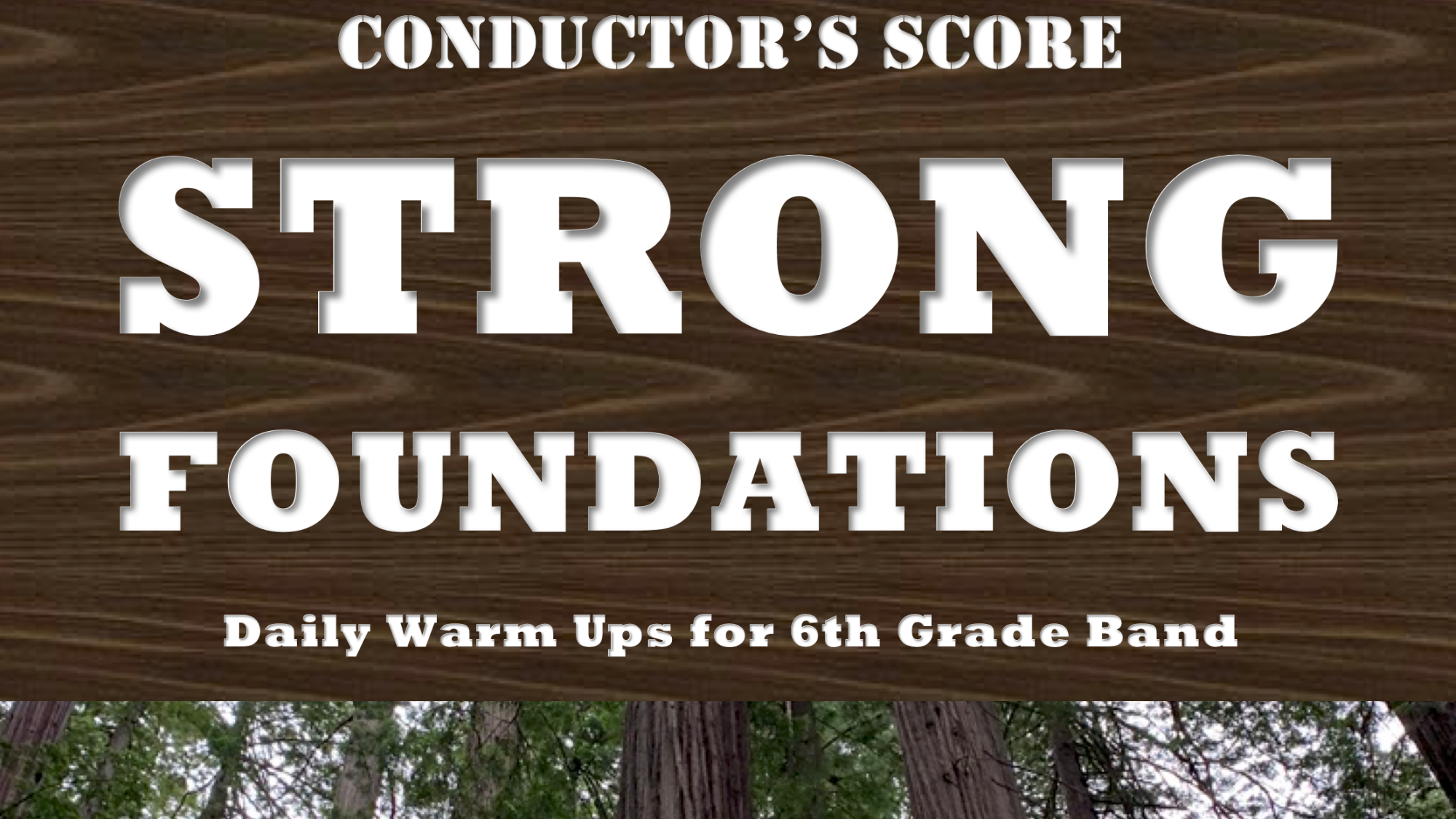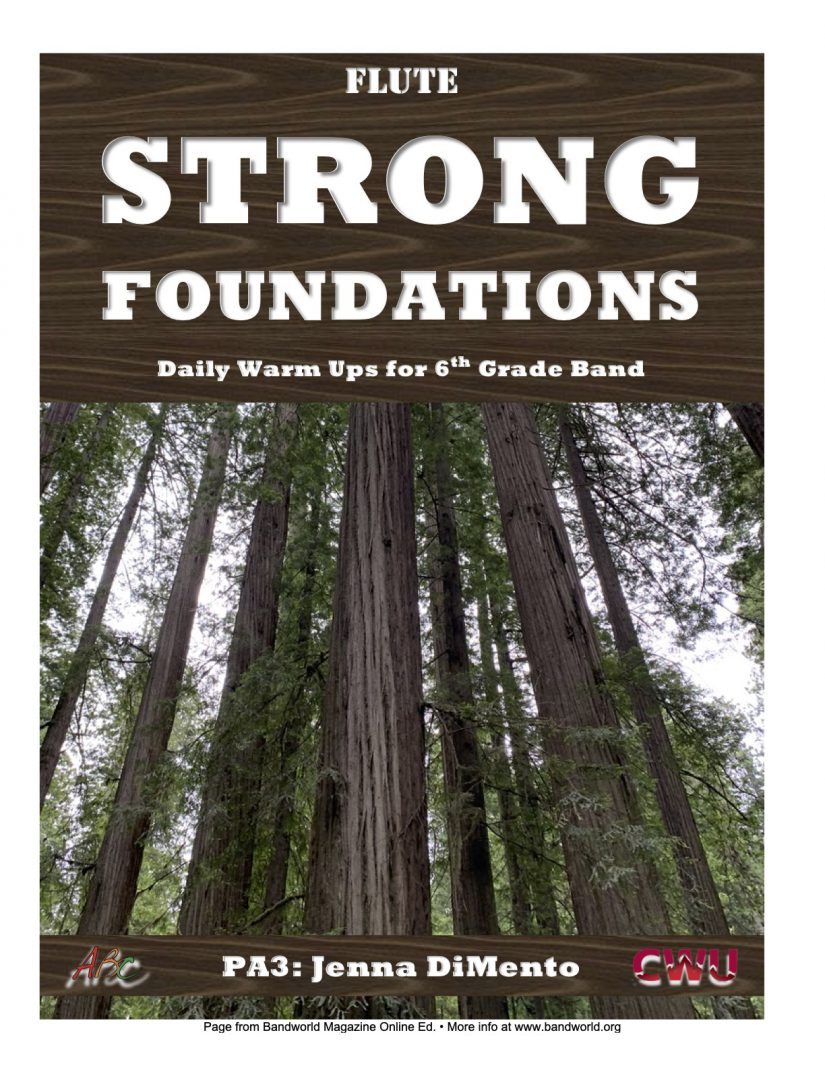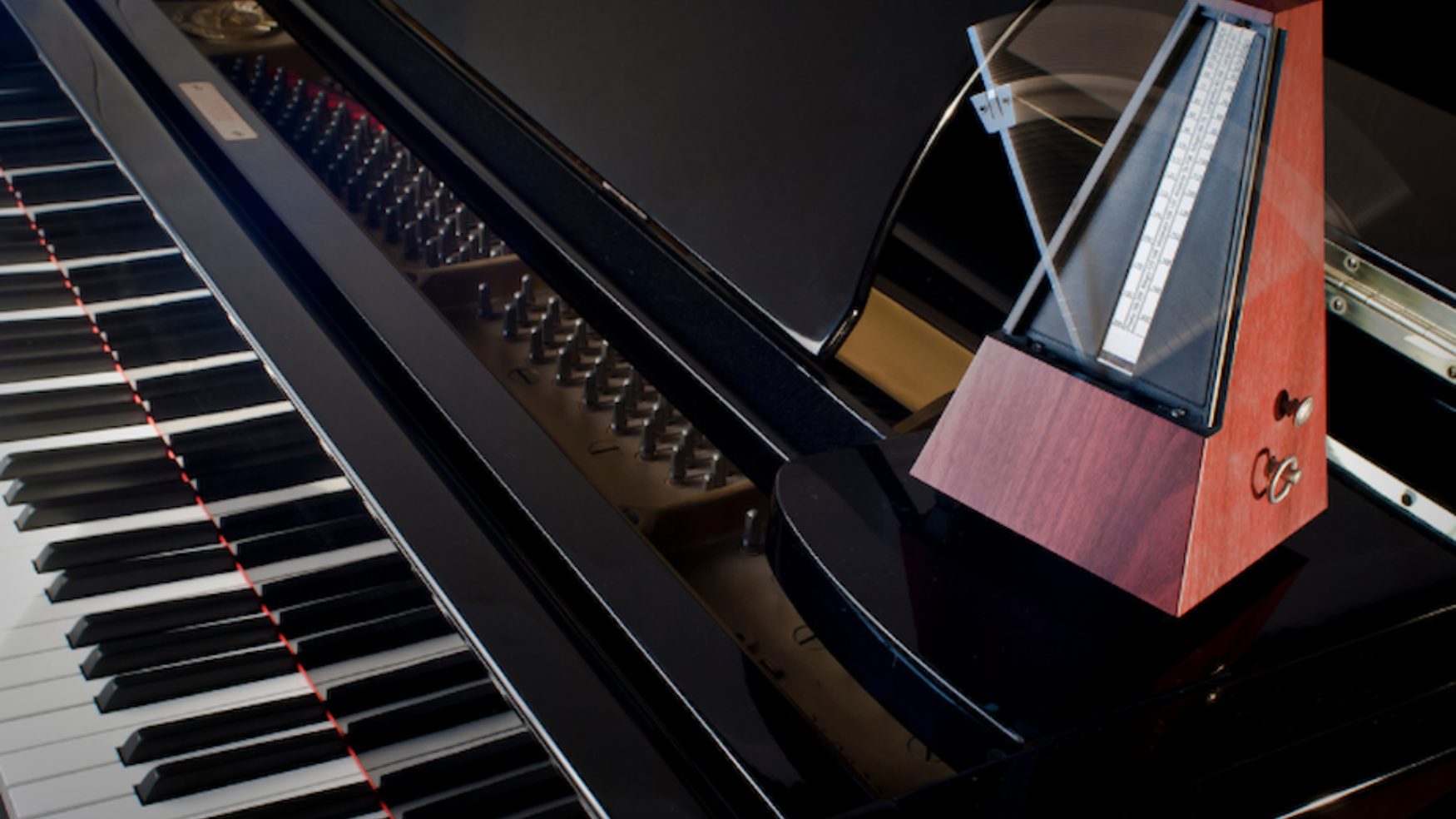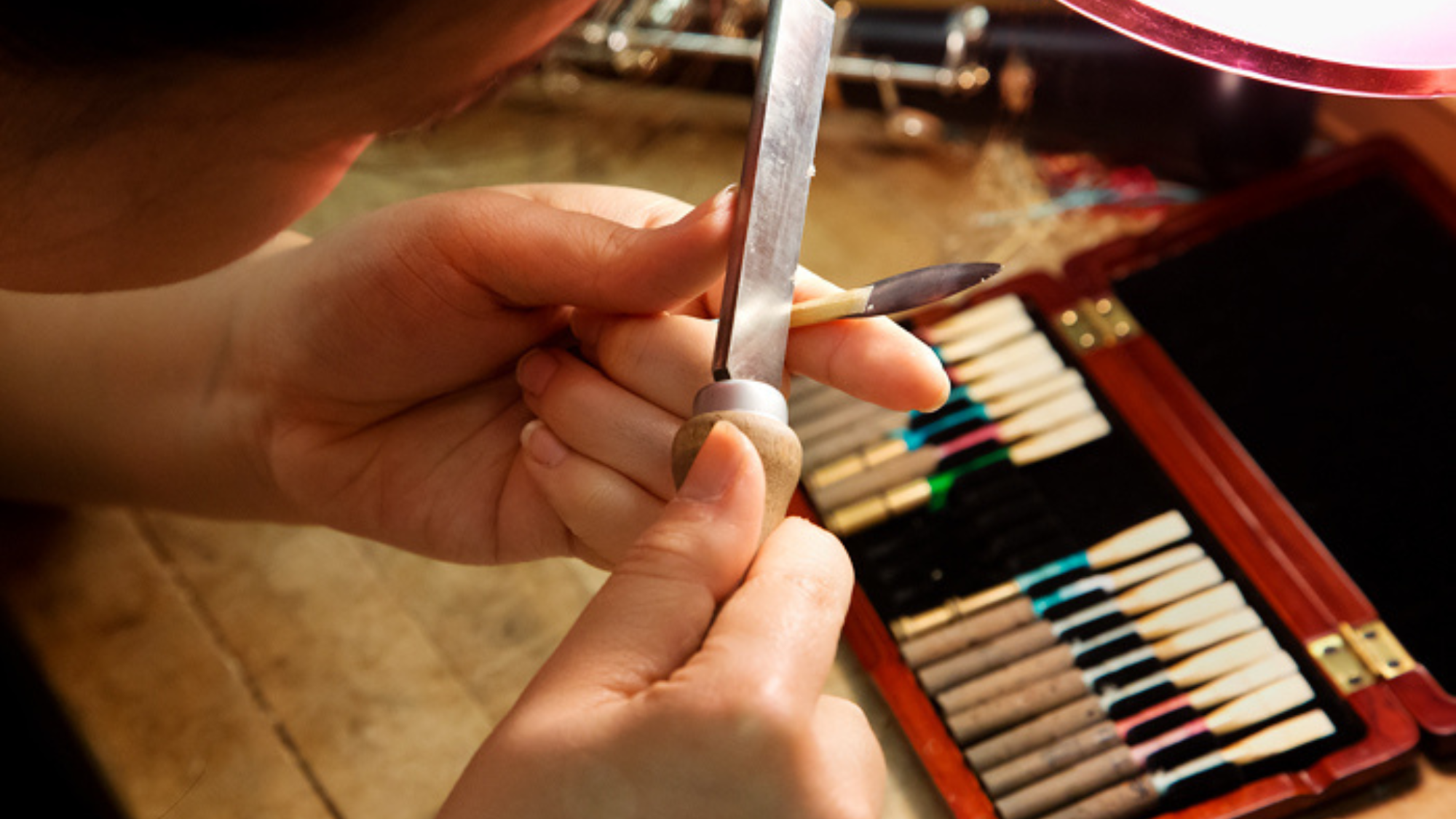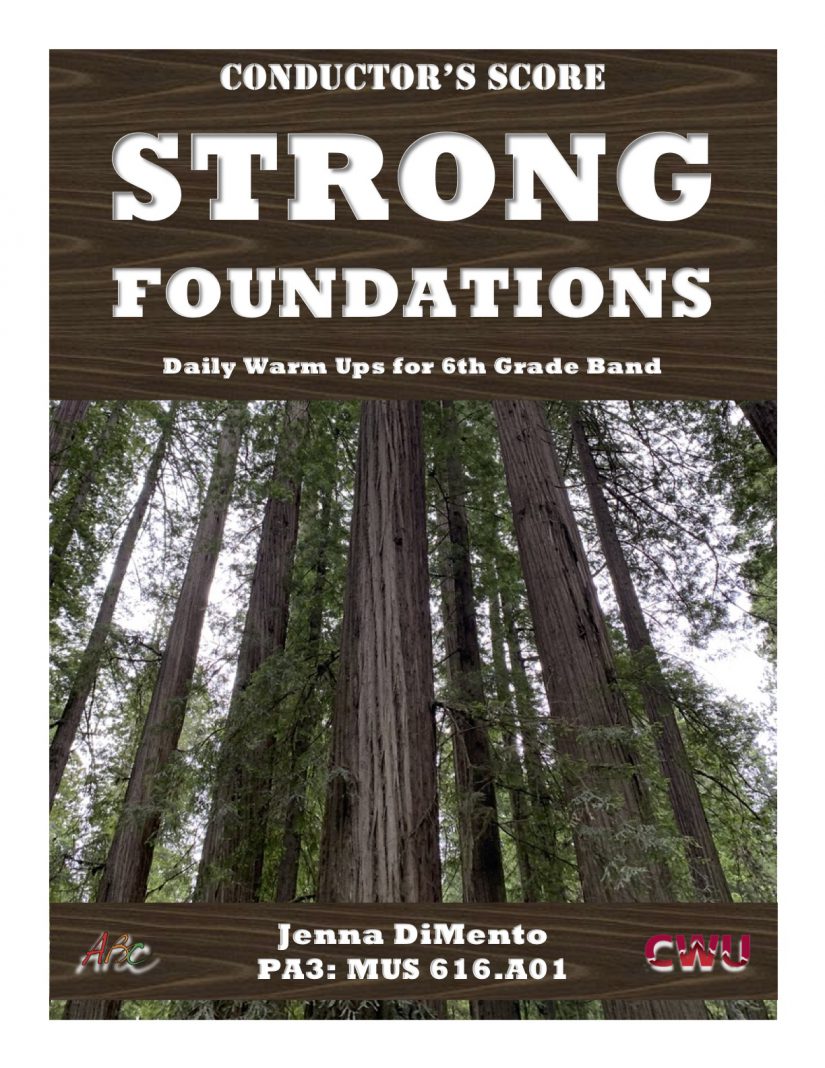
Download score and all instrument books.
ABOUT THESE BOOKS
Why I Chose This Project:
Before creating these books, I was dissatisfied with the quality of my 6th grade band’s warm ups. I would piece together rote exercises, technique exercises from our method book, and chorales from a different book. I also ended up writing out long tone and lip slur exercises for them to keep in their folders. Teaching the exercises by rote and finding the exercises in the different books and pieces of paper in their folder consumed time each class that we should have spent playing our instruments. Because of this, I decided to create a set of books that includes all of my favorite warm up exercises in one place.
How This Project Evolved :
I completed the warm up exercises for this project last summer so that I could try them out with my 6th grade band this past school year. Throughout the school year, I did a lot of tweaking as I found mistakes, came up with ideas of exercises that were missing, and identified things that did not work well for a specific instrument. I ended up printing new versions for my students a few times during the school year. I am really happy with the final result, but I plan to continue making modifications in future years. Before our school building closed due to COVID-19, I felt that all of my students had an extremely strong foundation on their instruments.
How I Use These Warm Up Books:
Each class, I choose approximately six exercises to work on with the students. I write the numbers of those exercises on the whiteboard, as well as the specific skills we will be working on. I have all of my percussionists play mallet instruments one class, and then snare drum (or drum pad) the next class. That way, they can help each other and I know that each one of them is getting equal time on each instrument (rather than always choosing to play snare drum in the warm up). I usually start class with the Remington exercise and have the brass players buzz the notes on their mouthpieces while the woodwinds and percussion play the exercise. Next, we usually do the lip slur exercise. After that, I usually choose one scale, one technical exercise, and one chorale. I like to focus solely on the key of concert B-flat for a large part of the school year so that the students develop a really strong foundation on that key. I gradually introduce the keys of concert F, E-flat, A-flat, and the chromatic scale starting in March. I love that I own these books, because I was legally able to upload them all to my students’ Google Classroom pages. Part of my remote learning assignments this spring involved playing specific warm up exercises in addition to the other music we worked on during the COVID-19 closure.
How Much Time I Spend Daily On The Warm Up:
In the beginning of the school year, we spent about 30 minutes of every class warming up. This seems like a lot (more than half the period), but I always find that students are rusty on their instruments at the beginning of the school year. By spending time learning many of the exercises and reviewing the skills they learned last year, this year’s 6th grade bands developed a strong foundation that helped them to really shine during the rest of the school year. In late October when we began working on concert music, I decreased the amount of time spent on the warm up to approximately 15-20 minutes per day. I feel this time is worth it in order to develop and maintain good habits.
General Tips For The Director:
-
The purpose of this book is not to go in order from the beginning to the end. It is simply meant to be a collection of all of my favorite warm up exercises in the same book. Choose several specific exercises to work on each day. I always try to choose exercises that reinforce skills that will be needed later in the rehearsal.
-
Remember to give the students time before playing each exercise to read the green colored educational notes written above each exercise. Each book includes tips that are specific to that instrument.
-
Consider instructing the brass players to buzz on their mouthpieces before they play. They can buzz the first exercise while the woodwinds and percussionists play it.
-
Vary the exercises by asking for specific dynamic levels and/or articulations. Don’t forget to remind the percussionists of proper stick heights for each dynamic level.
-
Be picky! Don’t accept poor posture, tone quality, intonation, or balance. Make sure the students play the correct note values; for example, whole notes should be held all the way through the measure until the first beat of the next measure.
-
In general, do not allow students to write in note names above or below their notes. They will use these “cheats” as a crutch and will not learn how to read music properly. I did provide a few “cheats” above notes that I knew my 6th grade students would not recognize. However, just like in a method book, I only provided the “cheat” once (solely for the first time that note occurred in the book).
-
Before playing lip slurs, consider teaching the band the basics of the overtone series so that they understand why multiple notes can be played with the same fingering.
-
In order to develop well-rounded percussionists, make sure the percussionists are spending adequate time playing both the snare drum warm up book and the mallet percussion warm up book. Do not allow any of the percussionists to become “solely drummers” or “solely mallet players”. I suggest having the percussionists play on drum pads during the warm up instead of snare drums so that you can more easily hear all of the instruments in your band. If you don’t have enough drum pads, you can substitute rubber mouse pads on a table.
-
I used the most common note spellings in the chromatic scale and other chromatic exercises rather than using sharps going up and flats going down the scale. I decided to write the notes that my students will be more likely to see in their music this year so that they can become confident with the chromatic fingerings. However, there are educational notes on the chromatic scale page for each instrument explaining enharmonic equivalents. We usually spend more time learning about enharmonic equivalents in 7th grade since this is generally when they will begin to come across the less common spellings of notes. It is my belief that keeping everything simpler at this young age will allow my students to retain information more successfully.
-
I suggest putting differently colored stickers on each of your clarinet students’ pinky keys to help them to initially learn and quickly identify the notes played with their pinkies. For example, I put a green sticker on the A-flat key, yellow stickers on the two F-sharp keys, orange stickers on the two F keys, and pink stickers on the two E keys. This way, when clarinetists have a question about a pinky fingering, the teacher can quickly say “your green key” instead of having to walk over and point out the key.
Why Do We Warm Up?
The goal of a warm up is to focus our mind, to warm up our muscles, and to form good habits through repetition. Once these good habits are formed, it will be easier to transfer them to all of the music we play. One of the jobs of a band director is to plan a warm up that teaches or reinforces skills that will be required later in the rehearsal.
Possible Skills to Focus on During the Warm Up
Consider choosing a few of the following skills to specifically focus on during each band class. Write those skills on the whiteboard and choose exercises from this warm up book that will facilitate improving upon those areas.
-
Posture
-
Hand Position
-
Embouchure
-
Breath Support
-
Tone Quality
-
Intonation
-
Balance and Blend
-
Playing Together
-
Dynamics
-
Articulations
-
Playing Technique
-
Rhythmic Accuracy
-
Range
-
Sticking Patterns/Rudiments
-
Reading Music

